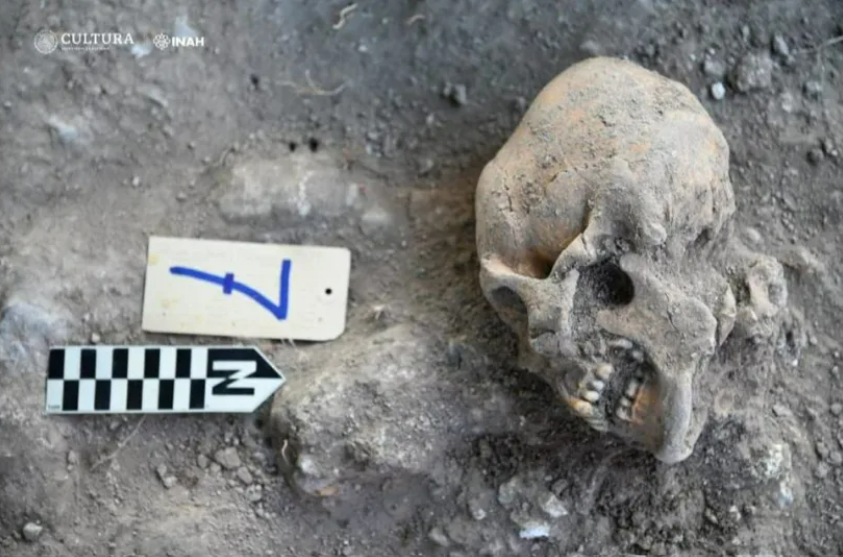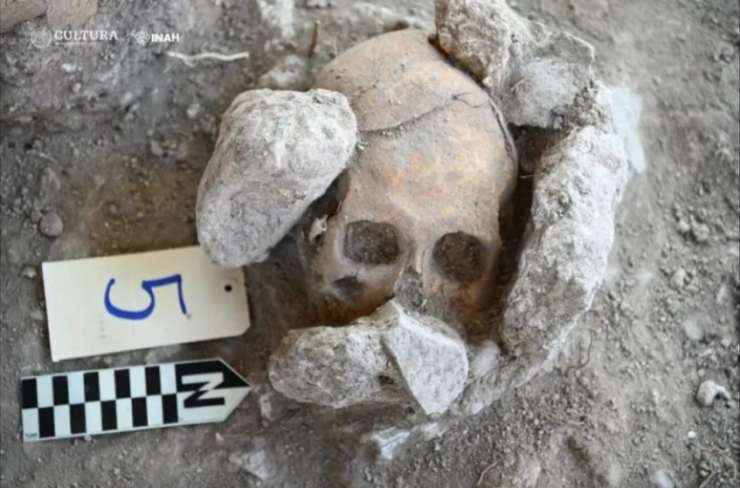Archaeologists from the National Institute of Anthropology and History (INAH) found decapitated and dismembered bodies on the steps of a pyramid at Moral Reforma, a Maya archaeological site about 70 miles northeast of Palenque, Mexico.
A Mayan city of the classical period, Moral Reforma’s occupation dates back to the 300s AD. The city became an important trading center along the San Pedro Mártir River. Experiencing its peak between 622 and 756 AD, the city covers 215 acres that include palaces, plazas and several pyramid complexes.
Two groups of burials at the stairs, one dating from between 300 BC and AD 250 during the Late Preclassic and the other from AD 600 to AD 900 during the Late Classic, have been found as a result of recent excavations at the Structure 18 pyramid temple in the eastern plaza of the city.
While the Late Classic group has up to 13 burials, the Late Preclassic group comprises up to 12 persons, some of whom were arranged in a sitting and lateral right position at the moment of death. Several of the burials from the Late Classic group were dismembered or decapitated.



The skulls found in both groups showed signs of some form of deformation intended to indicate an improved social status. (Artificial cranial deformation or modification is head flattening or head binding. It is a method of body modification in which a human skull is deliberately deformed. It is done by distorting the skull by applying force.)
A total of 567 artefacts, including shell and jade beads, shell rings, projectile points, vessels, and bone needles, were found in the Late Preclassic group.
Based on the depth and shape of the burials, researchers believe that they were placed as a sacrifice to a god of the Maya underworld during the consecration of the temple.
The Institute said the Moral Reforma Archaeological Project is an ongoing attempt to excavate and understand the city and its history. Archaeologists began work on another structure immediately after their findings at the temple. We are eagerly awaiting the results.
